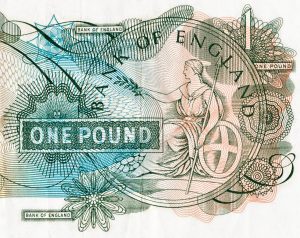 16 September 1992 is the Bank of England’s Black Wednesday and the day that one of the greatest traders of our time, George Soros, made more than one billion US dollars in a CFD trade that went perfectly right. CFD brokers, traders and novices the world over still study this example of foresight and financial tenacity as one of the greatest leveraged bets ever to work out. If you are planning to learn CFDs, you would do well to study this example and other stand-out trades to inspire your own future trades, even if on a considerably smaller scale.
16 September 1992 is the Bank of England’s Black Wednesday and the day that one of the greatest traders of our time, George Soros, made more than one billion US dollars in a CFD trade that went perfectly right. CFD brokers, traders and novices the world over still study this example of foresight and financial tenacity as one of the greatest leveraged bets ever to work out. If you are planning to learn CFDs, you would do well to study this example and other stand-out trades to inspire your own future trades, even if on a considerably smaller scale.
The scenario facing Soros: Setting the scene
The scene, as it were, was the run-up to the formation of the euro. To understand the Soros trade, you must understand the run-up to the euro formation and the fact that England was not a part of the currency as it was absent from the Eurozone. This was due to the European Exchange Rate Mechanism (ERM). It was introduced to stabilize the exchange rates between various European nations as they prepared to unite more closely through the new currency.
As history has shown, the UK did not adopt the euro but it did intend to in the beginning. England was originally going to join until things started to go wrong. The 1990s had arrived, and it was Germany that had established itself as the dominant economy on the continent. Although reunifying East and West Germany was a work in progress, this young new Germany was blazing its trail in industrial production and technological innovation – just think about the car production dominance that Germany still enjoys.
The situation was very different in England, where the economy was grinding to a halt and inflation was the order of the day. Despite this, England insisted on entering the ERM at 2.7 German marks (Deutsche Mark) to the pound, with the Deutsche Mark having become obsolete since the euro was introduced. This was a lofty valuation for the pound, to say the least. As England’s economy worsened in autumn 1992, this valuation began to look more and more inaccurate.
The pound takes a pounding
Not surprisingly, as far as shorting strategies went, the pound was being short-sold and this only served to increase inflationary and other pressures on the pound. Essentially, it was betting that the market – in this case, the pound – would fall.
The bottom line was that just like any other central bank, the Bank of England (BoE) had a mandate. This was to keep the pound within 6% of the value it had entered into the ERM, as the ERM currencies had only a 6% tolerance level for fluctuations. Keeping the pound within this 6% range was taking a mammoth effort. One of the things the BoE tried to do was radically raise interest rates to attract outside investment to strengthen the pound.
Nothing was really working, as forex and CFD traders kept shorting the pound. Among them was George Soros, whose Quantum fund allowed him to borrow and leverage enough funds to sell short $10bn worth of the pound. Within a matter of days, the interest rate had gone from 10% to 12% to 15%.
Soros alone was not responsible, but he was essentially the straw that broke the camel’s back. Soros would go on to pull off other trades, but these days he is better known as a philanthropist. Will there be bigger trades to come in the future? It wouldn’t be surprising. For now, however, Soros remains the man on the market to beat.